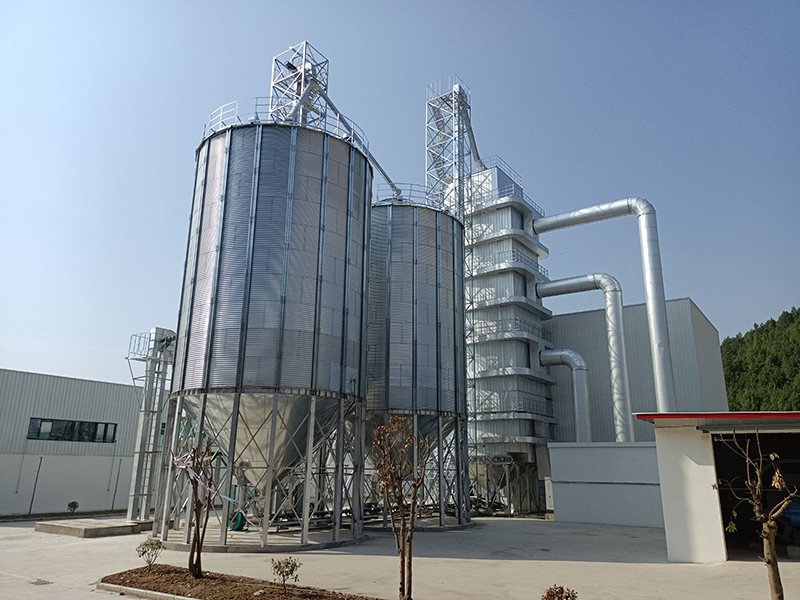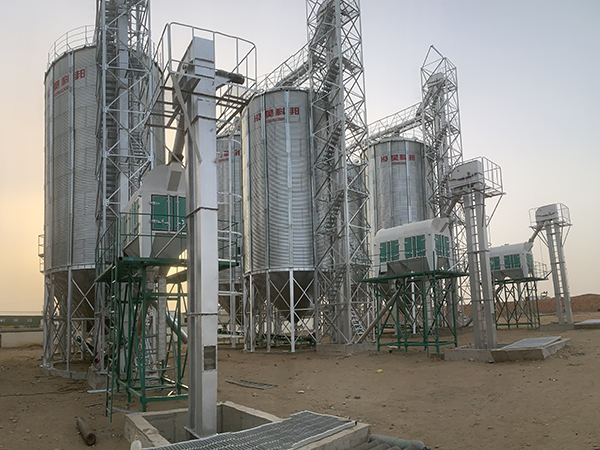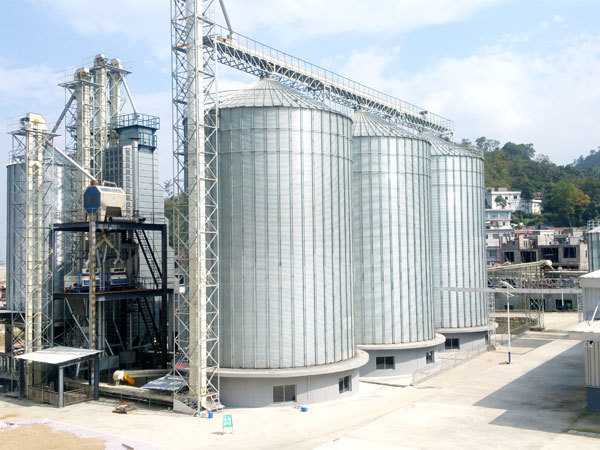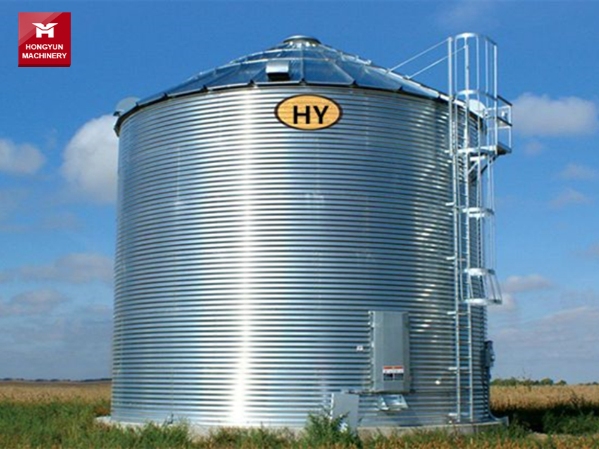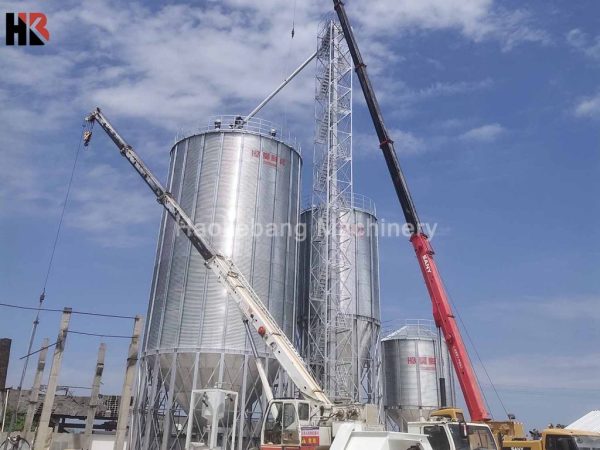What functions do rice silo offer
Rice silo are versatile for long-term storage of grains, offering durability with galvanized steel and multifunctionality with automated systems for temperature, humidity control, and safety features. Coban provides customized solutions for efficient grain storage, ensuring quality preservation and operational ease.
- Analyzing Cone Bottom Silo Franchising: Entrepreneurial Opportunities and Pathways to Success
- Cone Bottom Silo Procurement: A Prudent Choice for Agricultural Storage
- Cone Bottom Silo Wholesale: An Economic Choice for Agricultural Storage
- Cone Bottom Silo Manufacturers: Innovators in the Grain Storage Industry
- Cone Bottom Silo Companies: Providers of Grain Storage Solutions
- Cone Bottom Silo Factories: The Industrial Heart of Grain Storage
- Cone Bottom Silo Supplier: Innovative Partners in Agricultural Storage
- Cone Bottom Silo Sales: Market Dynamics and Strategies
- Cone Bottom Silo Prices: Influencing Factors and Market Considerations
- Flat-Bottomed Silo Franchise: A New Pathway for Agricultural Entrepreneurship
Rice silo can be considered the best method for storing rice. If you’re not familiar with this aspect, this article will provide you with a unique experience.
Storage Applications of Rice silo
Rice silo are specifically designed storage facilities for the long-term preservation of rice and other grain crops. These silos are also suitable for storing various agricultural crops such as seeds and rapeseed.
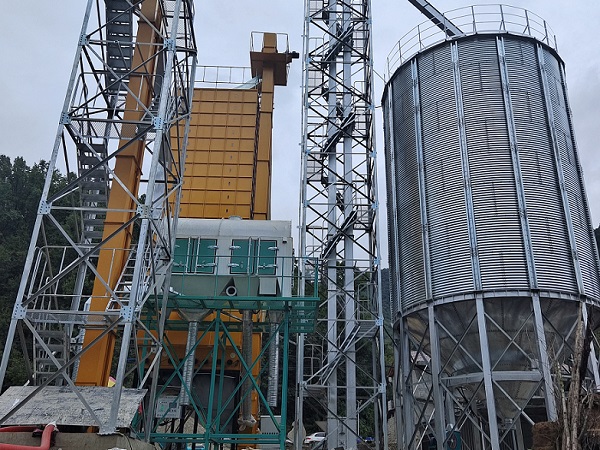
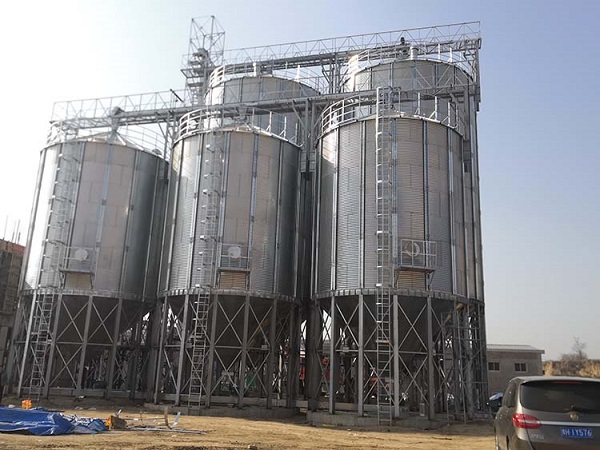
Rice silo are primarily used for storing rice but are also applicable for a variety of grain crops, including wheat and corn. They can effectively preserve seeds and rapeseed, providing necessary material reserves for agricultural production.
When constructing rice silo, durable materials with good protective properties are typically used. Steel plates are the most common choice because of their high strength, ability to withstand significant loads, and good moisture and corrosion resistance, making them suitable for long-term storage of grain crops. Additionally, the surface of steel plates is usually galvanized to enhance their weather resistance and extend service life. The selection of this material ensures that the silo can stably protect the stored grain crops under various climatic conditions.
Classification and Features of Rice silo
From the above, we understand that rice silo are mainly built with steel plate materials and can be divided into two types based on the bottom design: flat-bottom steel silos and cone-bottom steel silos. Cone-bottom silos have an additional conical bottom hopper in their structure.
Flat-bottom steel silo
The structure of the flat-bottom steel silo is relatively simple, mainly consisting of the top and the silo body. This design is suitable for storing various grain crops under 10,000 tons. During discharge operations, the Cleansweep system can be used for assistance to improve discharge efficiency and ensure the safety of operations.
Cone-bottom steel silo
The cone-bottom steel silo consists of three parts:the top, the silo body, and the conical bottom. This type of silo is suitable for grain discharge operations under 200 tons. The conical bottom design allows grain to flow out automatically through the hopper, achieving rapid discharge. The hopper’s angle can be designed at 30, 45, or 60 degrees according to different needs, to adapt to different discharge speeds and operational requirements.
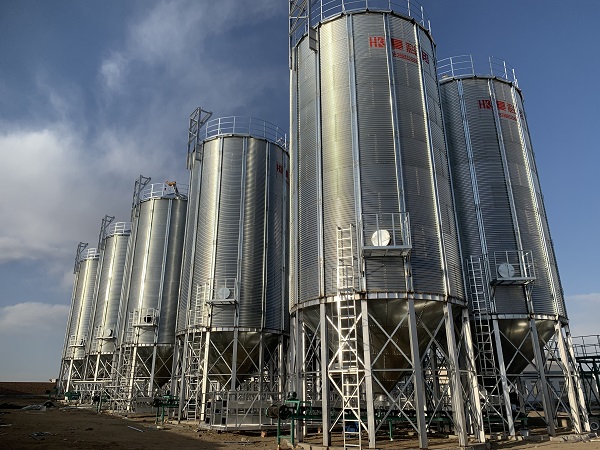
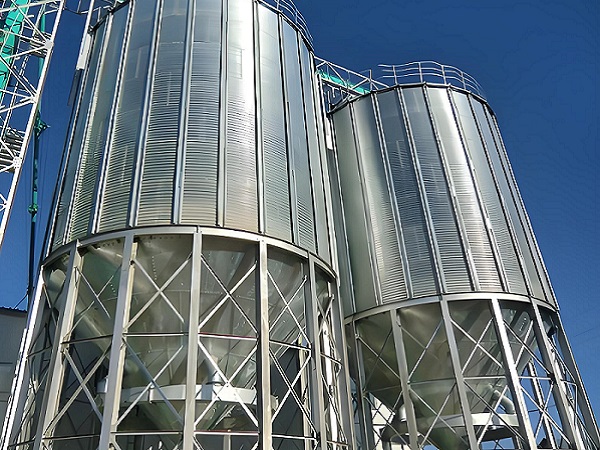
Multifunctionality of Rice silo
With the advancement of technology, rice silo have evolved from a simple storage space into a highly automated and multifunctional storage system.
Temperature monitoring function
The interior of the silo is equipped with advanced temperature measurement devices that can monitor the temperature of the grain in real-time. Once abnormal temperature changes are detected, the system automatically initiates corresponding adjustment measures, such as adjusting ventilation frequency or activating cooling equipment, to ensure the grain is always at the optimal storage temperature.
Ventilation and cooling systems
Modern rice silo have mechanical ventilation devices installed at the bottom and are equipped with ventilation ducts. These devices can be used in conjunction with mobile fans to effectively cool and ventilate the grain. Additionally, to better protect the grain, mobile cooling ventilation devices can be used to maintain the grain temperature at a low state of 5 to 15 degrees Celsius, extending the shelf life of the grain.
Fire and pest control measures
Rice silo are designed with fire and pest control needs in mind. Fire protection systems include automatic sprinkler devices and smoke detectors that can detect and take action early in case of fire. Pest control systems use physical or chemical means, such as sealing technology and regular pest inspections, to prevent pests from damaging the grain.
Humidity control
In addition to temperature control, rice silo are also equipped with a humidity control system. By monitoring the humidity inside the silo and using dehumidifying equipment or adjusting ventilation, mold growth due to high humidity can be prevented.
Automated inventory management
Modern silo systems can achieve automated management of grain in and out of storage. Through barcode or RFID technology, the storage location and quantity of each batch of grain can be accurately tracked, improving management efficiency.
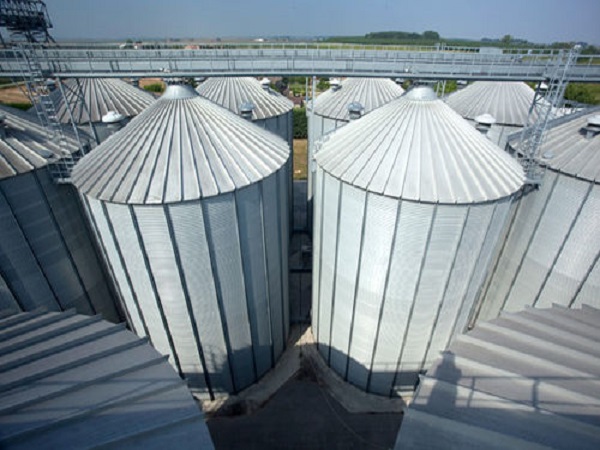
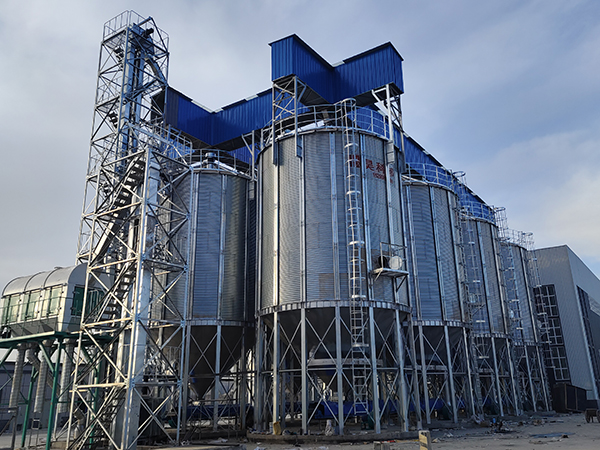
Contact Us
If you have the need to store rice or other grains, you can contact Coban.

